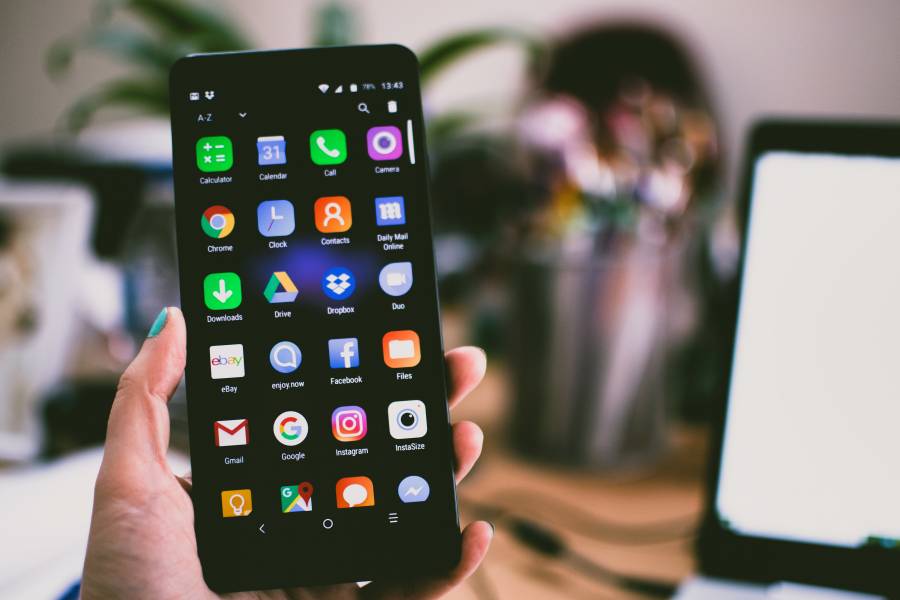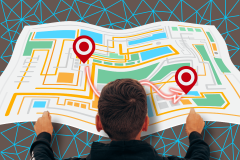Remote work options are becoming more palatable for employers, especially since there are more mobile software tools available to help people collect information, get on the same page, and stay on top of tasks. Research on workplace trends suggests that this gradual shift toward remote work isn’t likely to lose traction anytime soon. All information is telling us that remote work woes are a boon for mobile data-collection apps.
The way we think about work and where it gets done is changing.
Research on workplace trends suggests that this gradual shift toward remote work isn’t likely to lose traction anytime soon. For instance, a 2016 Gallup study found that 43 percent of U.S. employees — compared to 39 percent in 2012 — spent at least some time working away from their coworkers in different locations. That same study of 15,604 U.S. adults — conducted between January and February 2016 — also revealed that remote workers were spending more time away from their offices.
At that time, 31 percent of remote workers — compared to 24 percent in 2012 — reported spending at least 80 percent of their work time in the field, at home, or other work sites. This subtle yet perceptible shift in the way work is done has created a window of opportunity for mobile data-collection apps that aim to keep remote employees and their teams connected.
JotForm Mobile Forms is a good example. The newly released mobile app allows people to not only build forms but also access, collect, organize, and share data on the go, regardless of where or how they work.
Access and use mobile forms offline
As its name suggests, JotForm Mobile Forms’s offline feature places JotForm’s suite of services in the hands of users on their mobile devices even when they can’t find a stable internet connection or cell phone signal. JotForm Mobile Forms users, however, must be online to build a form and customize it, as well as use any of JotForm’s integrations with payment processors.
Since users don’t have to go through any steps to access the app’s offline capabilities, all they need to do is open JotForm Mobile Forms on their smartphone or tablet and go about their business. Any form information that’s submitted offline will be saved on a device and sent once a Wi-Fi connection is found.
JotForm users can adjust the app’s settings so that cellular data can be used to pull up the most up-to-date information in their JotForm account and send submitted form information once a cell phone signal is found.
Here are some standout tasks that can be accomplished in the JotForm Mobile Forms app, even when an internet connection or cell phone signal can’t be found:
-
Make last-minute changes on the go by modifying submitted form information or deleting individual submissions in the app without connecting to the internet.
-
Search for specific forms or submissions based on keywords or phrases, such as names, addresses, and titles. Search results can even be sorted by alphabetical order.
-
Import submitted form information, including names, addresses, phone numbers, and email addresses, to the contacts list in your mobile device.
Streamline workflows by assigning forms.
JotForm created the Assign Form feature in the mobile app specifically for users who need to share forms with team members who don’t require admin access to a form. Users can even assign forms to people who don’t have a JotForm account.
This feature directs team members to download JotForm Mobile Forms and sends them login credentials that they can use to access the form they’ve been assigned. They can then complete the form or use it to gather information from other people.
Although form assignees can only access information that was submitted and completed on their devices, the person who created the form can view, edit, and manage any submitted information.
Turn a mobile device into a public survey station.
The kiosk mode feature in JotForm Mobile Forms locks a form onto the screen of a mobile device and automatically refreshes every time someone submits a completed form. The refresh allows multiple people to fill out a single form in rapid succession and eliminates the need to manually pull up a form again once someone submits it.
There’s also an option to lock the screen in kiosk mode. Users must set a PIN to lock the screen and must enter it to exit kiosk mode. This Screen Lock option serves as an added layer of security since people who fill out a form won’t be able to access other parts of the app, including different forms and submitted information, unless they provide the correct PIN.
Avoid distractions by managing notifications.
It’s easy to see how JotForm users with a lot of mobile forms can get inundated with notifications whenever someone completes and submits a form. A key feature in the JotForm Mobile Forms app allows users to enable or disable notifications altogether or for specific forms at any time. Users can focus on what’s important and take action quickly based on the information that they receive.
Use all types of data to make informed decisions.
Although JotForm offers dozens of specialized form fields so users can collect a broad range of information, several of these widgets have been optimized so that people can use their mobile devices to capture a wide range of data, attach it to a form, and share it.
The app’s Form Builder prominently displays these widgets so that users can easily add them to a form.
Here are a few examples of specialized form fields that can be incorporated into a mobile form and used on a smartphone or tablet to capture detailed information:
-
Take Photo: allows form respondents to take photos with the camera on their mobile device and upload those photos directly to your form.
-
Voice Recorder: enables form respondents to record their voice or other sounds using the microphone on their mobile device or headphones. Sound files can even be played and re-recorded before being submitted with the form.
-
Barcode Scanner: lets form respondents scan a barcode using the camera on their smartphone or tablet. The barcode information is captured with the camera, stored on a form, and shared once the form is submitted.
-
E-Signature: enables form respondents to draw their signature on a form with a stylus or their finger.
-
QR Code Reader: allows a mobile device to read QR codes, which can store email addresses, URLs, telephone numbers, physical addresses, and other relevant information.
-
Geolocation: accesses the GPS features on a mobile device to determine where a form is being filled out — expressed in degrees of latitude and longitude. This field also allows form respondents to make adjustments if the location that automatically appears on a map is inaccurate. The coordinates, as well as a Google Maps link, will appear in a submission once the form is completed and submitted.
Leveraging feedback to craft targeted solutions.
Last year, when JotForm’s team of user researchers talked to people across the country who had used the previous version of the mobile app, it was clear that there was room for improvement. Researchers made several significant findings about remote workers and what teams wanted to help them get work done:
-
Remote teams wished to access, view, edit, and share information on the go even when they couldn’t connect to the internet or find a cell phone signal.
-
People who filled out their own forms or asked colleagues to do so wanted to collect a wide variety of information, such as geolocation data, photos, and voice recordings, with their mobile devices.
-
Although people wanted to receive notifications when a form was filled out and submitted, they also wanted the ability to turn the feature on and off for individual forms, especially when they were managing multiple forms at the same time.
-
Team leaders wanted to build and assign forms to coworkers without providing full or restricted access to a JotForm account. Coworkers, in turn, could pull up assigned forms on their mobile devices, collect information, and submit it so team leaders could manage the incoming data.
-
Remote workers wanted a way for people at events, trade shows, and conventions to fill out a form over and over again without potentially compromising information that’s stored in a mobile account.
Hours of discussions with mobile app users also allowed researchers to see why these features were so crucial to remote workers and their teams.
Researchers found people were determined to solve real-world problems or fill a need in their community:
Molly Rosen is a mother of three who worked as an intellectual property legal professional for 25 years before starting her budding, Minneapolis-area cat sitting business in 2016. Since she suffers from a rare, painful, and degenerative connective tissue disorder, Rosen leans on her life partner, John Hansen, to help her do what she loves.
Hansen uses mobile to manage the reservation process for nearly 400 existing clients. Push notifications in the mobile app let Hansen know when someone has filled out and submitted a reservation form. Knowing when someone has filled out a form allows him to make business decisions quickly, such as assigning visits for specific cats on certain days, even when he’s on the go.
With close to 15,000 students on more than 230 college campuses and more than 320,000-lifetime members, the social fraternity has a robust history of helping young men form lasting friendships and develop leadership traits to prepare them for life after college. Phil Aiello has no shortage of information to manage as the fraternity’s marketing director.
Aiello uses mobile to gather information from individual chapters and members, from job applications to nomination forms. Since the fraternity has chapters across the country, he wanted a better way to assign forms to local leaders without providing restricted access to the organization’s account and creating sophisticated data-collection tools that hid information from certain people or required too much manual work.
Mina Okpi started a group for fellow nature lovers in color in New York City after she was diagnosed with cancer in 2015. While on a camping trip that was intended to help her heal, she had an epiphany: She was the only black person there. Her group now has more than 2,300 members and hosts regular activities throughout the year, from bike rides in Central Park to day trips to nearby ski resorts.
Okpi relies on her mobile to collect signed liability waivers from new members before they participate in activities, but she also needed a way to collect this information offline on her mobile device. That’s because some new members would forget to fill out a liability waiver before they arrived at an activity site, where there can be little to no cell phone reception or internet access.
The end result of all the user experience research and product development work is JotForm Mobile Forms, an app that’s redefining the way people think about working on the go.
Final thoughts
As more people gravitate toward remote work, changes in how teams are structured and how information is exchanged are reshaping the software tools companies use to keep everyone connected. It’s a reality that prompted researchers and developers to reassess how the online form builder’s mobile app could help remote workers do their jobs on the go and improve collaboration with their teams.
Those discussions led to a completely new product that’s more in line with current work trends and aligned with the needs of remote workers who rely on mobile every day.






















